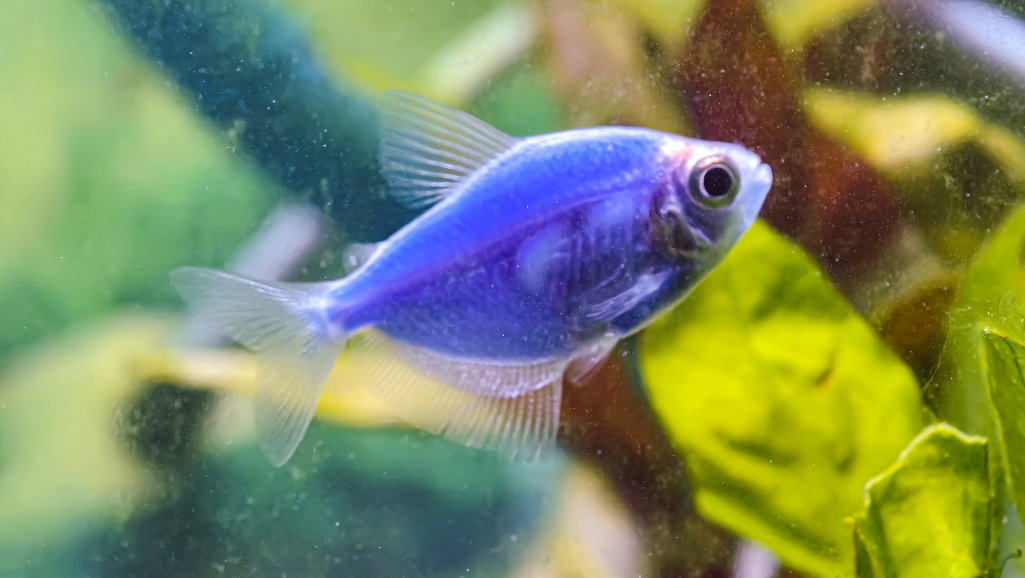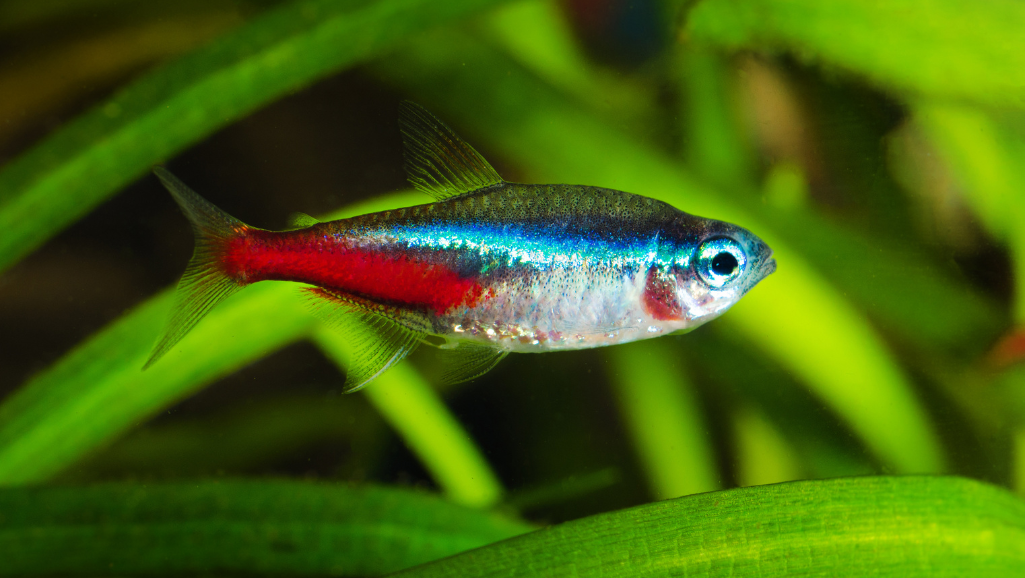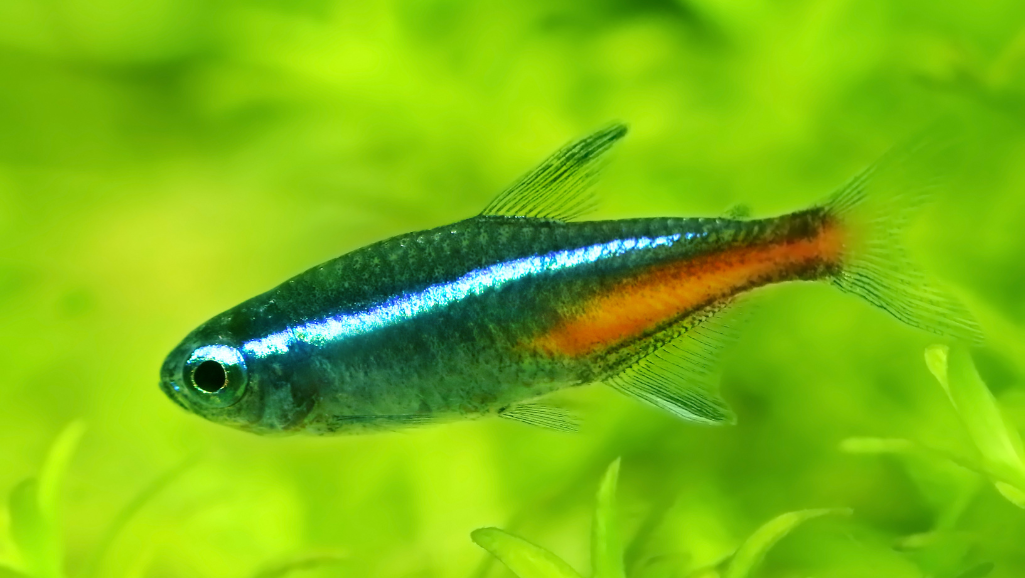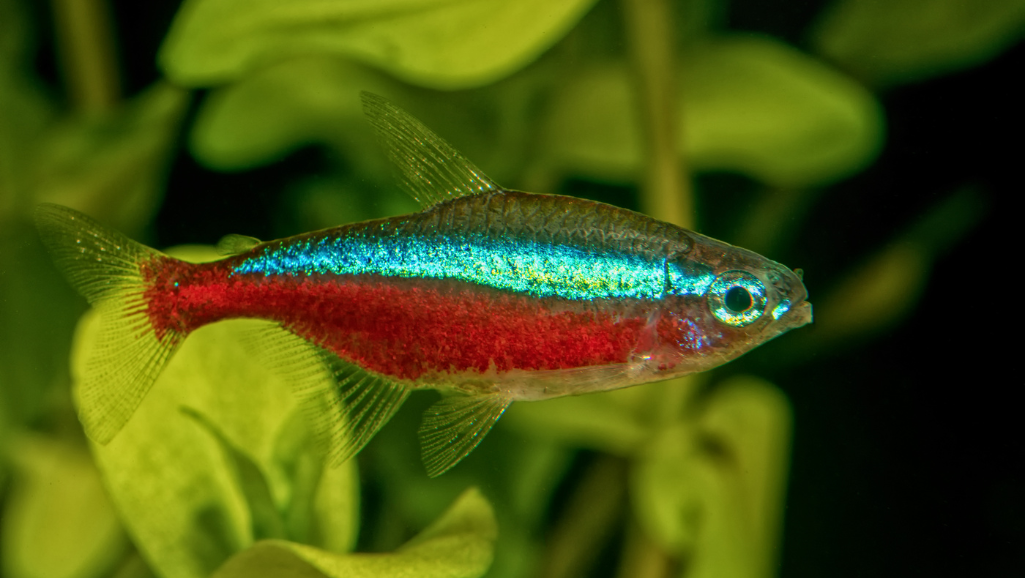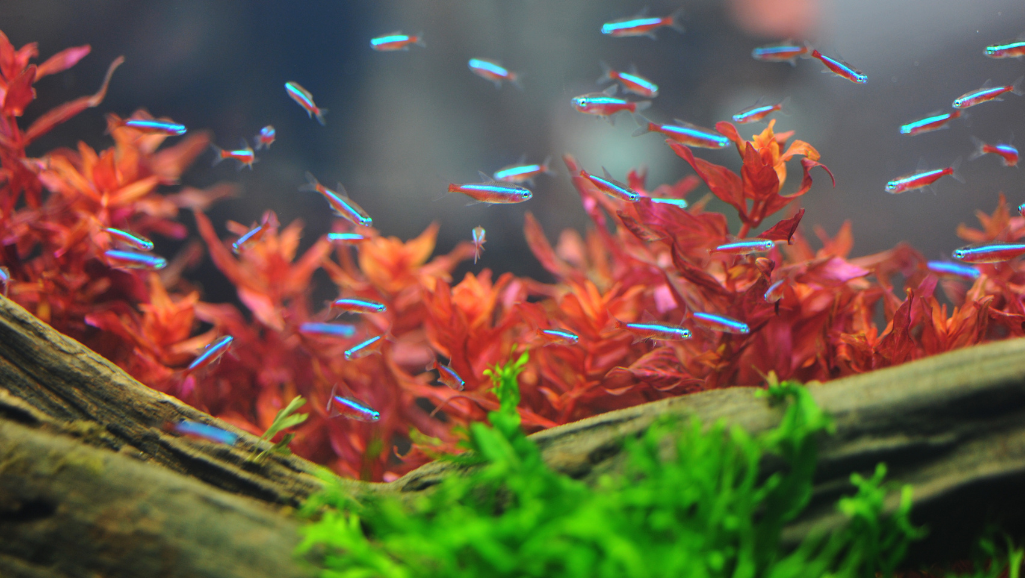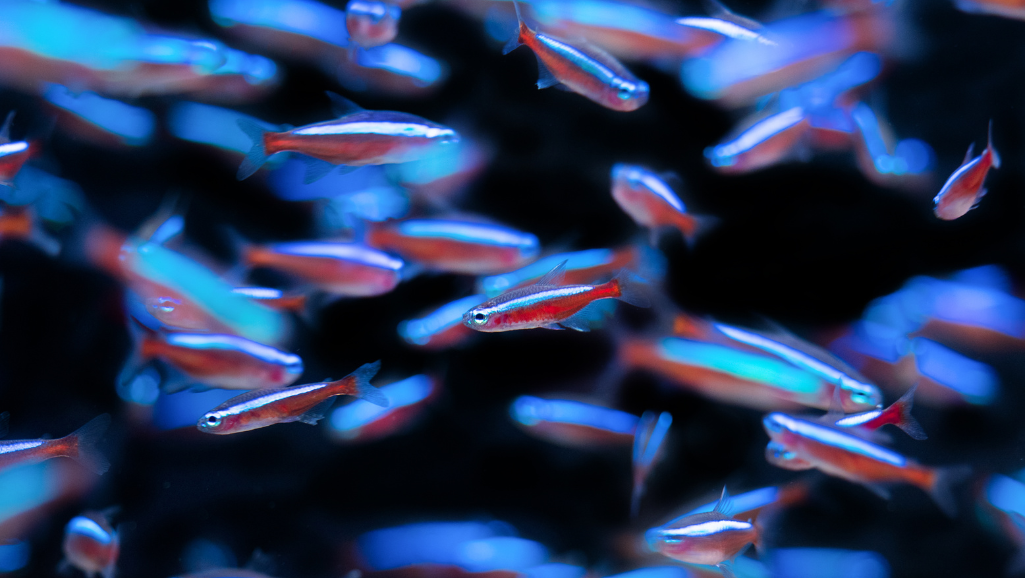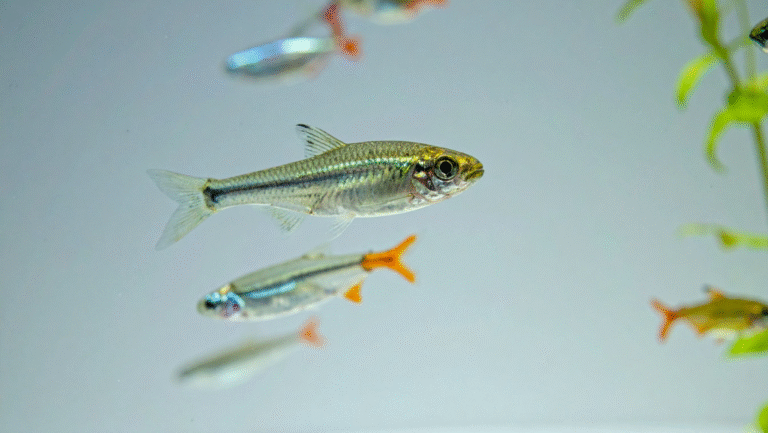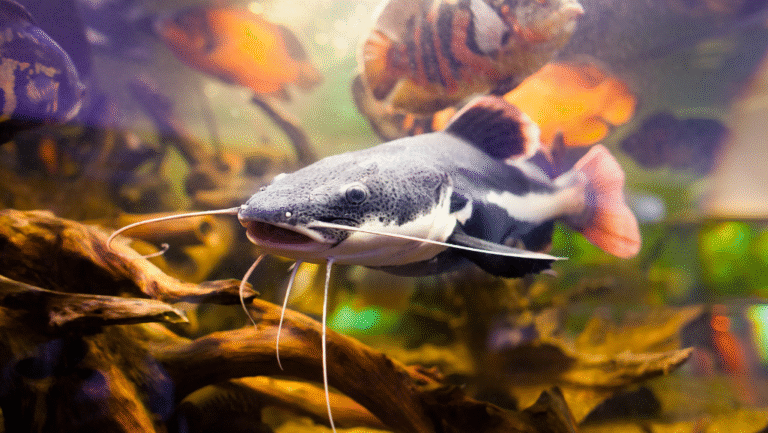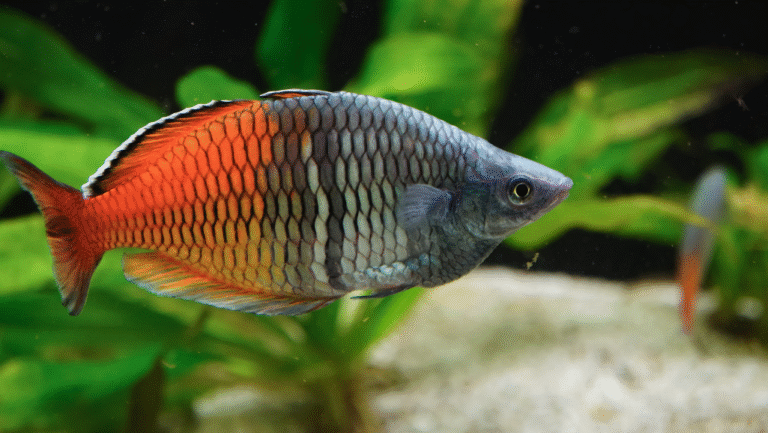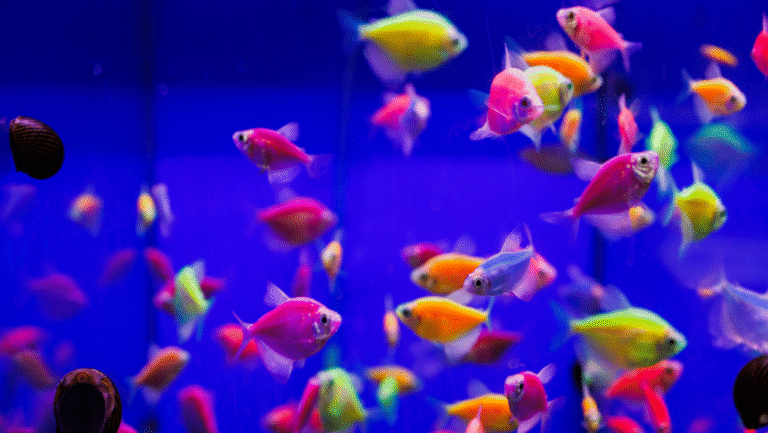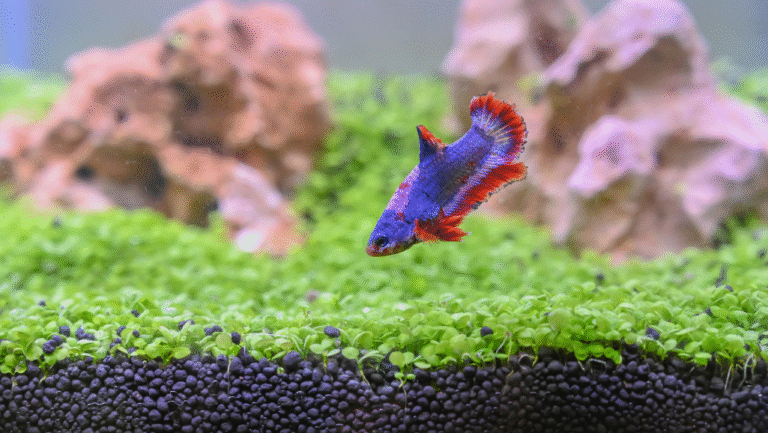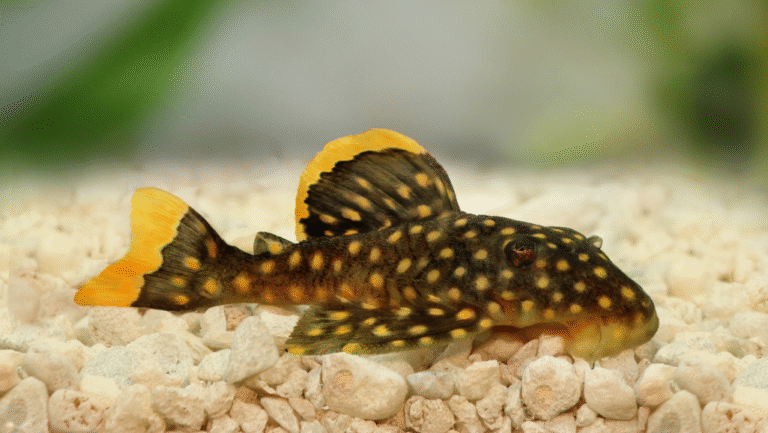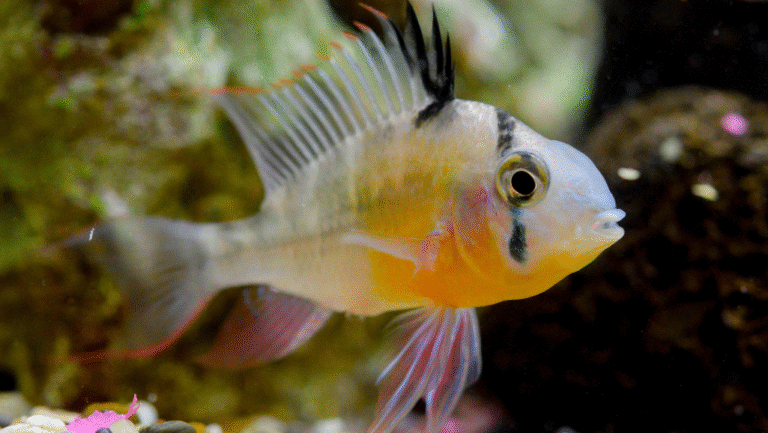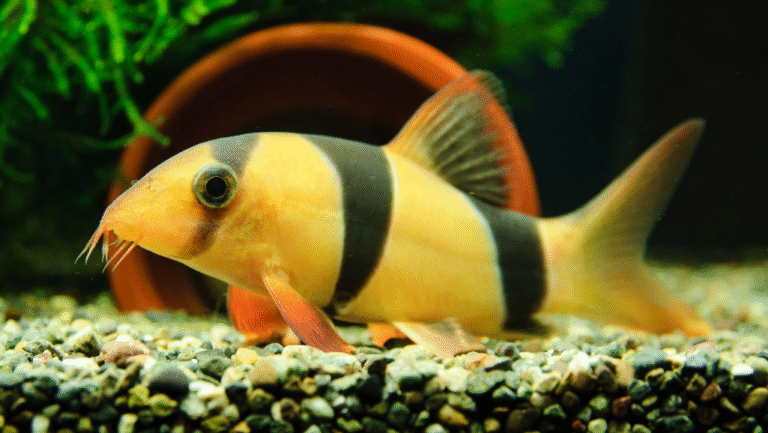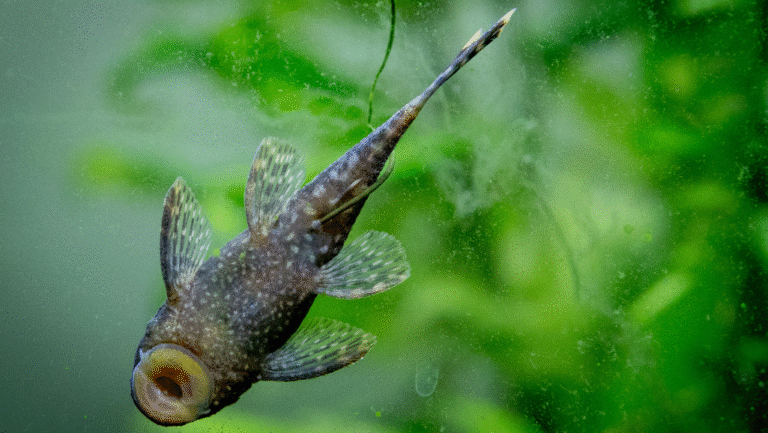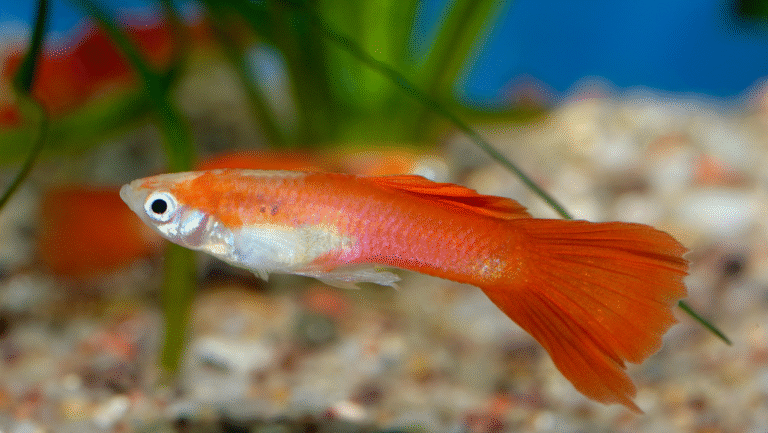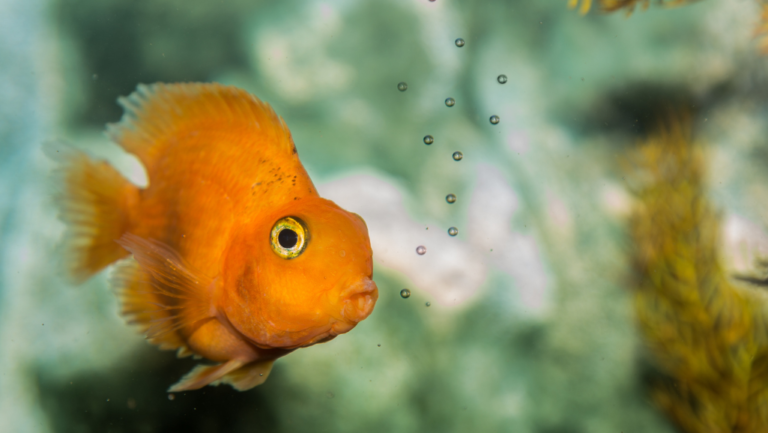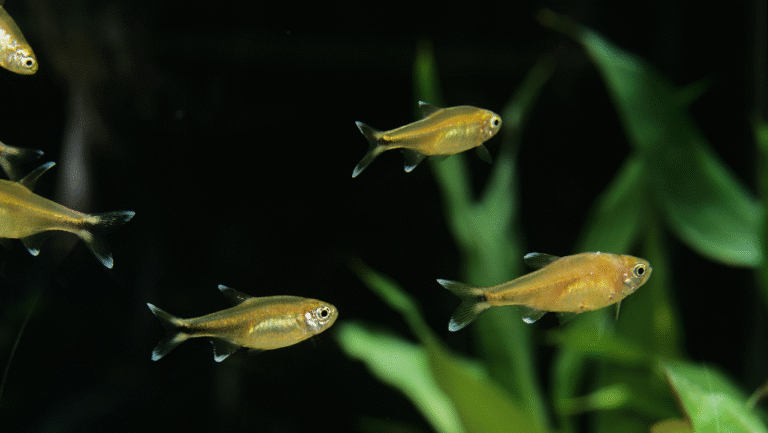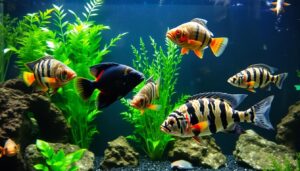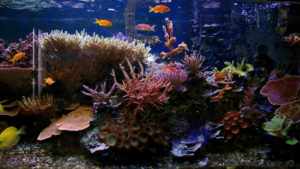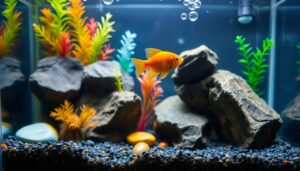Meet the green neon tetra, a small schooling fish whose iridescent stripe seems to shift with mood and light. This striking species brings life to planted aquariums without overpowering a layout.
Native to tannin-stained streams in Brazil, Colombia, and Venezuela, this fish prefers soft, acidic water, dim light, and darker substrates to make its color sing. The lateral stripe deepens in low light, creating a living shimmer that enhances any tank.
Expect a peaceful community member that thrives in gentle flow and mature systems. In this article, you’ll learn identification tips, ideal aquarium setup, feeding for brilliance, compatible companions, and simple breeding basics.
Key Takeaways
- Distinctive stripe changes with light and mood, boosting visual interest in planted tanks.
- Best kept in soft, acidic, tannin-rich conditions with subdued lighting and dark substrate.
- Peaceful schooling behavior makes it ideal for community aquariums.
- Stable, mature systems and gentle filtration help sensitive newcomers settle.
- Practical setup and feeding choices support long-term health and vibrant color.
Green Neon Tetra Basics: Identification, Size, and Lifespan
Recognizing the essentials — stripe, size, and sex differences — sets you up for success with these small schooling fish.
Appearance and the iridescent blue-green stripe
The most striking mark is a turquoise-to-blue-green lateral stripe that runs along the body.
This stripe may show faint red accents but stays subtler than in similar neon relatives. It also darkens at night, which helps the fish hide from predators and signals mood.
Adult size and sexual dimorphism
Adults reach about 1 inch in size. Females are often slightly fuller-bodied, especially when carrying eggs, while males stay slimmer and more streamlined.
Lifespan and wild-caught considerations
With steady care, expect a 2–5 year lifespan. Many specimens in the trade are wild-caught, so newcomers can be sensitive after import.
Tip: Add them to a mature, stable tank and avoid sudden parameter changes to help them settle and thrive.
- Identify Paracheirodon simulans by its blue-green stripe with faint red.
- Plan stocking around adult size near one inch.
- Watch body shape to tell female from male before breeding or grouping.
Paracheirodon simulans vs. Neon and Cardinal Tetras
A close look at stripe length and red pigmentation quickly separates these three popular aquarium tetras.
Stripe and color are the fastest ID clues. Paracheirodon simulans shows a greener, turquoise stripe that often covers more of the head and reaches the caudal base. It has noticeably reduced red below the stripe compared with related fish.
By contrast, the cardinal tetra displays a full, bright red stripe running eye-to-tail. The classic neon tetra has a red patch that begins mid-body rather than at the head.
Size at a glance: cardinal ~2 inches, neon ~1.5 inches, and the smallest, green neon, about 1 inch. Size matters when planning nano tanks or larger schools.
- Decode shop names: the fish sold as a “false neon tetra” or “blue neon tetra” is often P. simulans.
- Use stripe reach and head coverage as quick field cues for identification.
- Remember small differences in pigment and size guide compatible schooling and biotope choices.
For a compact comparison and buying tips, see our detailed guide on green neon vs cardinal tetra.
How to Set Up the Aquarium for Green Neon Tetras
Plan a layout that supports natural behavior by creating a calm midwater lane framed with cover. A 10-gallon tank is a practical minimum for a small school; larger tanks let ten or more fish move freely and form stable groups.
Filtration and flow: use a sponge filter or add pre-filter sponges to HOB/canister intakes. This keeps the current gentle and prevents suction injuries for tiny fish.
Substrate and cover: choose a dark, fine substrate and add driftwood and leaf litter like catappa to release tannins and offer hiding spots.
- Plant densely with low-to-medium light plants and include floating vegetation to diffuse lighting.
- Keep the center open with wood and plants flanking sides so the school can swim safely.
- Use a dark background and quiet equipment; tight lids prevent escapes and stress.
These choices boost color, reduce stress, and create a serene home for your fish in a true blackwater-inspired tank.
Water Parameters and Blackwater Conditions
Keeping parameters steady is the best way to mirror the blackwater homes of this species. Recreate soft, humic waters and your simulans will stress less and show natural behavior.
Temperature targets and tolerance
Target 74–82°F as a comfortable temperature range for most home setups. This species tolerates warmer pockets in the wild, but a reliable heater keeps the range steady.
pH, hardness, and tannins
In nature P. simulans lives in acidic blackwater with very soft to moderately soft hardness (~18–143 ppm). At home, keep pH mildly acidic to neutral and focus on stability over exact numbers.
- Use botanicals like catappa leaves, alder cones, and driftwood to add tannins and a tea-colored look.
- Avoid peat harvesting; choose sustainable sources and avoid sudden parameter swings.
- If your tap is hard, use RO or prefiltered blends and remineralize lightly to match your chosen range.
Note: Wild-caught fish need mature biofiltration. Do not add these sensitive fish to an immature tank; acclimate them slowly for best results.
Schooling, Behavior, and Community Compatibility
When kept in the right numbers, these small fish show true schooling choreography. They prefer the midwater lane and feel safest in numbers. A calm, predictable tank helps them display natural movement and bright coloration.
Ideal group size and midwater habits
Keep at least six, but aim for 8–10 or more to reduce shyness and encourage tight schooling. In larger groups they swim confidently and coordinate turns, which is rewarding to watch.
Peaceful companions that work well
Pair them with peaceful bottom dwellers like Corydoras and a single gentle centerpiece such as a honey gourami. Adult dwarf shrimp can share space, though tiny shrimp fry may be eaten.
What to avoid in a mixed setup
Avoid larger or predatory species that see small fish as food. Arrange driftwood and plants to create swim lanes and retreats. Predictable feeding and gentle maintenance keep the community calm and let this species thrive.
- Aim for 8–10 to unlock confident schooling and midwater choreography.
- Combine with peaceful bottom dwellers to fill different zones.
- Expect opportunistic snacking on shrimp fry; provide moss for protection.
Feeding Green Neon Tetras for Color and Health
Offer a consistent, varied feeding plan to bring out the best health and shine in these small schooling fish.
Daily staples should focus on crumbled quality flakes and micro pellets that fit tiny mouths.
These base foods provide steady nutrition and make daytime feedings simple and reliable.
High-reward supplements
Rotate live or frozen treats like baby brine shrimp, daphnia, and cyclops a few times each week.
Occasional freeze-dried tubifex and fine fry foods work well for variety and enrichment.
Frequency and portioning
Keep portions modest and feed multiple small meals rather than one large serving.
Feed across the midwater column so every individual can access food without frantic competition.
- Daily routine: fine flakes and micro pellets.
- Rotate: live/frozen items for extra nutrition and vibrancy.
- Observe: bright eyes, tight schooling, and eager feeding signal success.
With a balanced diet and careful portions, green neon tetras will show better color and long-term vitality in a calm planted tank.
Breeding Green Neon Tetras: A Step-by-Step How-To
Successful breeding begins with a focused conditioning plan that boosts egg production and courtship energy. Prime adults with heavy feedings of live and frozen foods. Consider short-term separation of male and female to encourage larger spawns.
Conditioning and spawning setup
Assemble a dedicated, seasoned spawning tank (about 10 gallons). Use RO water softened to very low GH and add tannin-rich leaves and driftwood to mimic blackwater. Keep the tank dark to reduce stress.
Egg protection and adult removal
Install an egg barrier—plastic mesh or egg crate wrapped with fine netting—elevated on PVC so eggs fall to a bare bottom. Add dense java moss on top to encourage spawning. Introduce breeders in the evening and remove adults by morning to prevent egg predation.
Fry care and first foods
Keep lights off for five days because the eggs are light-sensitive. Start fry on green water, infusoria, or vinegar eels for the first time. Feed small amounts often.
- Transition to live baby brine shrimp as fry grow.
- Maintain immaculate, gentle conditions with tiny water changes.
- Monitor growth and water quality to protect fragile early stages.
Designing a Blackwater Biotope That Makes Colors Pop
Design choices—water color, plants, and wood—set the stage for luminous stripes. Recreate slow-to-moderate flow and overhanging riparian vegetation to echo natural river edges. Brown-stained water from humic substances softens contrasts and flatters tiny iridescent fish.
Tannins, wood, and sustainable botanicals
Infuse your water with catappa leaves, alder cones, and driftwood to create that tea-stained glow. These botanicals release tannins that calm fish and make color read richer.
Substrate, plants, and dim lighting
Choose a dark, fine substrate to anchor the scene and amplify glints. Plant with shade-tolerant species like Microsorum, Taxiphyllum, and Cryptocoryne, and add floating cover such as Ceratopteris to soften light.
- Infuse water with botanicals—catappa leaves, alder cones, and driftwood for authentic blackwater mood.
- Use a dark fine substrate to set contrast and showcase neon highlights.
- Plant dense, shade-loving vegetation and floating plants to filter lighting and create safe lanes.
- Keep lighting subdued and flow gentle so the midwater lane remains calm for schooling behavior.
In a well-planned aquarium or tank, subtle tones become dramatic. Let restraint guide your layout and watch tiny stripes glow like embers at dusk.
Buying, Acclimating, and Quarantining Green Neon Tetra
A smart purchase and gentle first days in quarantine set these delicate simulans up for success. Many trade specimens are wild and need calm conditions. Make sure your display is fully cycled and stable before you buy.
Quarantine in a separate 10–20 gallon tank so you can observe and treat problems without risking the main display. Keep flow gentle and lights low. Feed small amounts and watch appetite return over several days.
- Match vendor water when possible, then slowly adjust pH and water chemistry over a week.
- Drip acclimate to harmonize pH and hardness—this reduces shock for sensitive fish.
- Target pH 5.5–7.5, soft water under ~140 ppm hardness, and a stable temperature of 74–82°F.
- Use observation rather than routine medication; intervene only when signs appear.
- Move to the display during quiet hours to ease integration and reduce stress.
With careful sourcing, slow acclimation, and calm quarantine care, your green neon tetras will settle confidently and reward you with lively schooling and color.
Conclusion
With calm water and a thoughtful layout, these little schooling fish will repay patient care with steady schooling and a living shimmer. Use dark substrate, driftwood, and botanicals to recreate their blackwater range and let the stripe read richer.
Keep schools generous, tanks mature, and parameters steady to unlock confident behavior. Offer a varied diet that includes small frozen or live items—brine shrimp are an excellent occasional treat—to develop body condition and color.
Choose peaceful companions and protect tiny shrimp and fry from predators. If you breed them, plan for darkness, an egg barrier, and microscopic first foods to raise healthy fry.
With attentive, consistent care and time, your aquarium will show why this species remains a favorite for planted tanks and calm displays.
